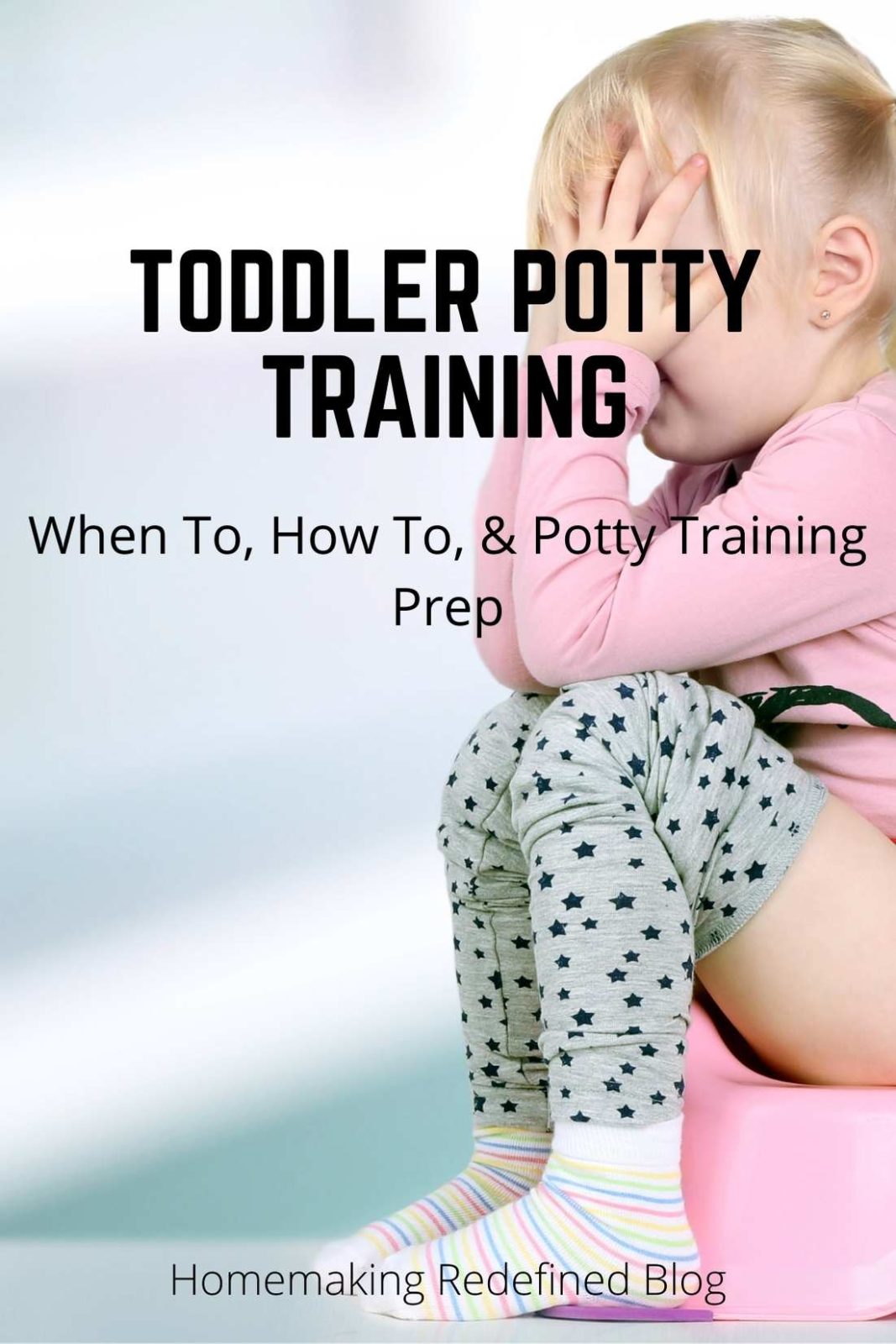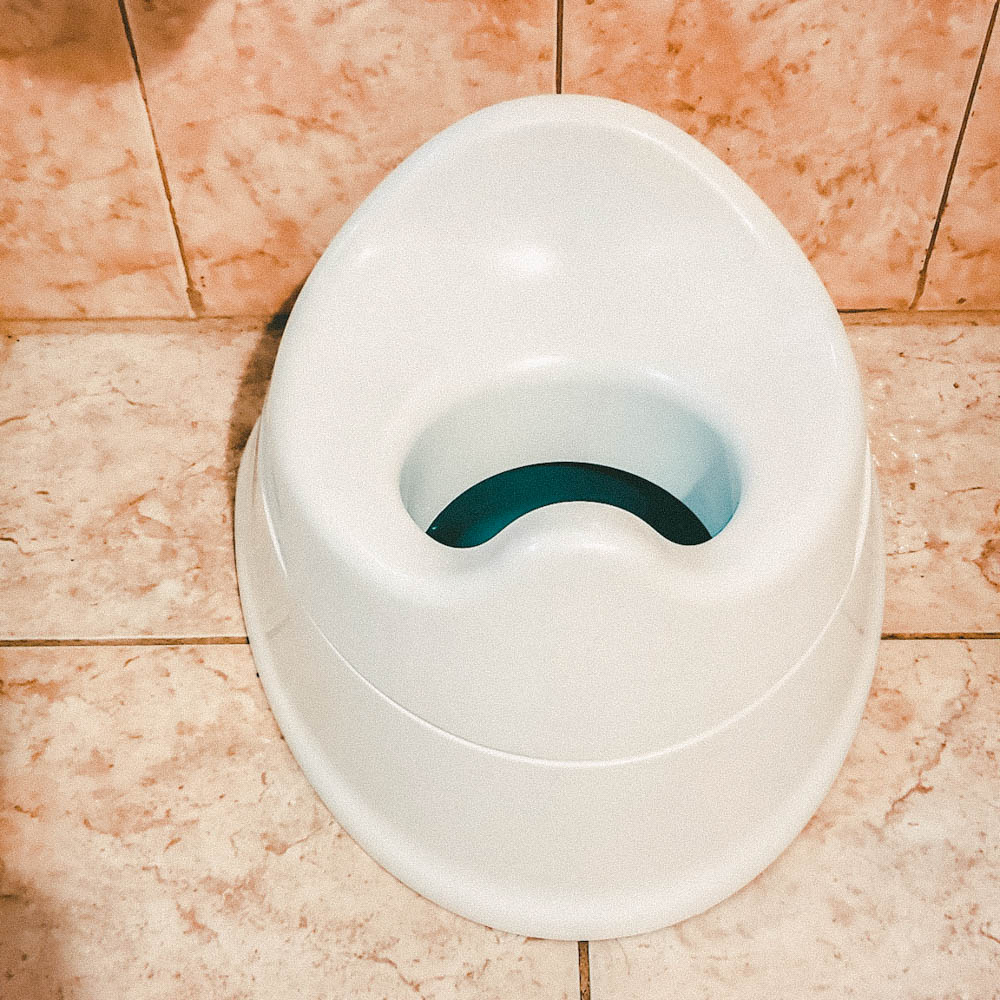Discussing when to, how to and all things toddler potty training prep.
Are you in the process of toddler potty training or perhaps thinking about potty training your toddler?
As a mom of 4, potty training is not my first rodeo. I’ve picked out my best practical potty training tips to share and help calm your mind, ease you into potty training, and keep your sanity intact.
Don’t let planning life around potty training your toddler drive you nuts. You’ve got this!

First things first…..
To clarify, I will admit potty training my fourth daughter is more challenging than I like. Janelle is the boss, and she knows it; if you are working with a boss baby like myself, let me prepare you before you begin toilet training, with my training pre-tips.
Identify if your child is ready to potty train.
Typically, a child is ready to potty train around the age of 18 months to 3 years. Girls tend to potty training sooner than boys, but it depends on your child’s readiness.
Secondly, You may be wondering how to tell if my child is ready to potty train?
Your child may be ready to toilet train if
- He or she engages in independence (put on and take off clothes with minimal assistance, get on and off the potty, etc.).
- child understands and verbalizes the words potty, pee, poo, “I went/need to go potty”, etc.
- your child knows when they have to go potty before or during the process.
- you notice your child can keep their diaper dry for a least 2 hours.
- and your child is capable of following simple instructions?
If and when your child indicates signs that they are ready to potty train, then its time to prepare and prep for potty training.
How to prepare before you start.
As you notice your child’s indicators and cues for expressing interest in toilet training. Take the opportunity to develop a plan of action.
For example, using a potty training schedule will help your child gain his or her independence. Additionally adding in reinforcements for praise, perhaps designing a backup plan for when trouble ensues, etc.
I recommend using a Potty Training Tracker for best practice. For more Potty Traning Tracker tips click here!
Homeschooling my older three children keeps me busy. I like to use a schedule to keep me posted from all things homeschooling to potty training. I love a good planner, don’t you?
If you’d like a free blank block schedule planner or tracker, and or sample homeschool schedule to put your mind at ease, click here.
Friendly adult reminder! Humor is good for the soul.
With so many examples in our household, you’d think Janelle would be successful at concurring her potty fears. Sadly, potty training gets the best of us sometimes. For some toddlers (like my daughter), potty training comes with worries, fears, and doubts.
To avoid these potty training woes, we read stories about toilet training, watch videos, and introduce a little potty humor into our morning routine. Everyone loves a good poop joke every once in a while.
Some of our favorite books include Once Upon a Potty, and What’s a Potty For? These books are great to leave in the bathroom or in several potty locations as it encourages children to take all the time they need to complete their business.
Speaking of potties. A toddler can never have too many potties.
Potties, potties, potties!
You can never have too many potties when potty training, right? Grab a travel potty, a potty ring and stool for each bathroom, and a potty training chair.
If you are able, take your child potty chair shopping to see what they like. Children enjoy taking ownership and being a part of the toilet training process.

Most importantly, due keep in mind that every toddler is different.
My first three children preferred to train on the “big potty like mommy.” My youngest, however, needs to have her choice of training chairs. One day she preferred the Minnie Mouse training chair, the next time her princess potty training chair. Whatever works for a boss, baby.
Keep in mind transitions can be difficult, and encouragement is the key.
Try to practice on several different potties (if needed) will help your difficult child transition into a comfortable public toilet space.

After all planning and prepping for the big day are complete don’t forget the reinforcements.
Reinforcements to the rescue.
Why are reinforcements important, you ask?
I know what you’re thinking, and yes, more than likely, you will reward your child when potty training. Don’t think of it as a bribe. Think of it as a happy little cloud of marshmallows that needs to be eaten in the bathroom.
Reincefoments are important because they are tangible items used immediately after positive behavior occurs to validate positive praise. For some children, positive praise is not enough. The idea is to not only receive positive praise after correct behavior but to receive a reward of their choosing. This reward or reinforcement is what will encourage them to continually complete the toilet training process. Once the process has successfully been completed on a number of occasions then tangible reinforcement isn’t necessary. Resulting in fading the prompt of editable or tangible praise.
For example, I took my toddler to the dollar store to pick out several rewards she liked including candy. It felt like Christmas shopping in July. At home, we talked about which rewards she liked the most and visibly put away her choices for later reinforcements. I handed her a reward and thanked her for helping me. This way she knew her reward was obtainable. The rest of the rewards she chose were used during the toilet training process, not at another time. This way my daughter is encouraged to by new something new.
Time to start your three days of Potty Training. You got this!
To sum up, you’ve identified that your child is ready to potty training, you prepped and prepared all items needed and discussed with your child how and how the process with go, then let the training begin.
The easiest way to start training is to clear three consecutive days from your schedule to stay at home. Have your potty training tracker ready and as soon as your child wakes in the morning start your training. Use a tracker sheet to schedule toilet breaks within a decided time frame and to document accident or voiding activity.
Just a friendly reminder teaching a new skill takes time. Here is an example of how I potty trained my children.
When I potty trained my first three daughters, training was a piece of cake, literally. When each child turned three years old (as long as they were showing signs of wanting to potty train), I exchanged any diapers we had in our household for underwear and stocked up on reinforcements.
After training three girls in a row, you’d think number four would be easy, right? With three years of practice behind me, the boss baby should be easy to train, or so I thought?
As in previous years, I introduced the same potty training routine. I spoke with my daughter the week prior to the start date about our new schedule and the rewards she would be sure to receive. When Friday morning arrived, we jumped into our toilet training routine.
Here’s how I potty trained all of my children
- As soon as my daughter woke up our potty training began.
- I used consistent phrasing. By encouraging my daughter to say, “I have/need/want to go potty, I am all finished.”
- Only used underwear and not toilet training diapers (your choice).
- Charted toilet times, to avoid accidents and set a timer to remind my self it’s to take my daughter to the potty.
- Consistently follow a complete potty routine each time when necessary (pull up and down pants, flush toilet, wash hands). Practice makes perfect!
- Used plenty of praise and reinforce.
I must say, adults need reinforcement and reminders too. Don’t delay! Get your Potty Training Tracker today and make toilet training a breeze.
Still not sure yet, let’s clarify what we know so far about toilet training.
To clarify.
The trick is to have a child go in the potty.
The easiest way to maintain a consistent schedule and expectation is to start potty training at a specific time (preferably in the morning).
Charting your data of times spent at potty and voids in the potty.
Setting a timer will allow you to create an effective schedule for potty training success.
The best tip I can give you is to ditch the diapers and only use underwear.
This way, your child can see the action of his or her happy accidents. Remember, you are teaching your child a new skill and they are learning a new skill in the process. Keep in mind most skills take time. Did you know what hot or cold meant or felt like until you experienced hot or cold? Exactly.
There is no easy of staying this, but be prepared to clean up several accidents while toilet training.
Just because your child happens to void in the toilet does not mean potty training is a complete success. It’s up to you as the parent to decide the consistency and frequency needed to determine potty training success.

In conclusion.
Preparing children before potty training and using reinforcers affords your child the freedom to be at ease with potty training.
Each one of my children learned at different rates and speeds. There is no one size fits, only tips, and tricks. You’ve got this!
Wishing you the best in your potty training adventures!
Jaclyn





